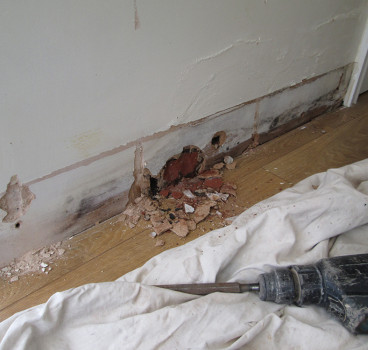6 Top High-Risk Construction Jobs and How to Increase Their Safety
Falls, struck-by incidents, engulfment and explosions are just a few of the hazards you face in construction. While the industry is considered inherently dangerous, it could be much safer. The better you understand the riskiest construction jobs and how to increase their safety, the more accidents you can help prevent.
The Top 6 High-Risk Construction Professions
The top six high-risk construction jobs include high-rise work, heavy equipment operation, trenching, demolition and highway construction.
1. High-Rise Work
High-rise construction is dangerous because you are many stories up. If a concrete slab collapses or your scaffolding disengages, you will fall. At extreme heights, accidents or even dropping to a lower level can be fatal. Falls are responsible for nearly 40% of deaths on construction sites. One of the main contributing factors is a lack of proper safety training.
Even something as minor as a dropped tool quickly becomes hazardous at these heights. As it falls, it gains momentum. If you are in the wrong place at the wrong time, you will experience a struck-by injury.
2. Heavy Equipment Operation
Struck-by and caught-between accidents are two of the Occupational Safety and Health Administration’s “fatal four.” They are common around heavy equipment. Operating multi-ton machinery requires great skill, but you and your colleagues need adequate training to use heavy-duty equipment safely.
3. Trenching
Engulfment in collapsing material is a possibility when doing excavation work. One square yard of soil weighs over 3,000 pounds dry — and more when wet — which is enough to fatally crush or suffocate you if you’re caught in a trench collapse. Most trenching deaths happen in the construction sector.
4. Demolition Work
Demolition exposes you to explosions, fires, falling debris and electrical hazards. Whether caught in an unexpected structural collapse or inhaling hazardous substances during demolition, you can experience long-term and short-term health effects.
5. Highway Construction
Struck-by incidents are the leading cause of nonfatal injuries. They are particularly dangerous at road construction sites, where almost 1,500 fatal occupational injuries occurred from 2011 to 2022. Many employees were struck by a vehicle in their work zones.
6. Confined Space Work
Construction work in sewers, tanks, ducts and vaults is inherently dangerous. If you inhale noxious fumes, go without oxygen for too long or are engulfed by collapsing material, you risk injury. Between 2011 and 2018, over 1,000 fatal occupational injuries involving confined spaces occurred. Long-term health effects are not uncommon.
Related read: How the new Building Safety Regulator aims to improve safety across the industry.
How to Improve Site Safety in High-Risk Jobs
Construction professionals should go beyond basic standards to improve safety in high-risk construction jobs. You shouldn't accept the bare minimum when your team’s health and well-being are on the line.
Advanced safety features can help close the gaps. For instance, a strategically positioned exterior camera lets you identify the most direct path when moving around the site or following a line for trenching. You receive precise positioning information without leaving your cabin, saving you time and helping prevent struck-by incidents.
Stopping 100% of accidents is unlikely since human error and equipment failure exist. Near-miss reporting involves tracking the incidents that did not result in an injury, illness or fatality, but could have. Data allows you to spot trends early, making your efforts more effective.
You should implement training based on historical safety incidents and near-miss data. The better you understand best practices and your personal protective equipment, the more likely you are to respond correctly in emergencies.
Even though this industry is among the most dangerous, only around half of construction workers receive safety training annually. Classroom and hands-on education are effective training methods, and technologies like virtual reality enable no-risk training.
Fostering a Safety-First Culture in Construction
Whether you construct high-rise buildings or dig roadside trenches, you are responsible for fostering a safety-first culture at your worksite. If you see an unsafe practice, say something. The more people you get on board, the more injuries you can help prevent.
Additional Blogs

Why most BIM Models are not actually that useful
For more than a decade, Building Information Modelling has been celebrated as the future of coordinated design, efficient delivery and data-driven asset management. In theory, BIM promises seamless...
Read moreHow construction can cut Its carbon footprint by caring for soil
Soil is often dismissed as mere dirt, but it is one of the planet’s most powerful carbon stores, holding more than all of the world’s forests combined. Yet in our rush to build, pave and develop, we...
Read more

What is bridging damp? How it happens and how to fix it
Bridging damp happens when moisture finds a path around the building’s damp-proof course (DPC) so it reaches your internal walls and skirting. If you see damp patches rising above the skirting or...
Read more